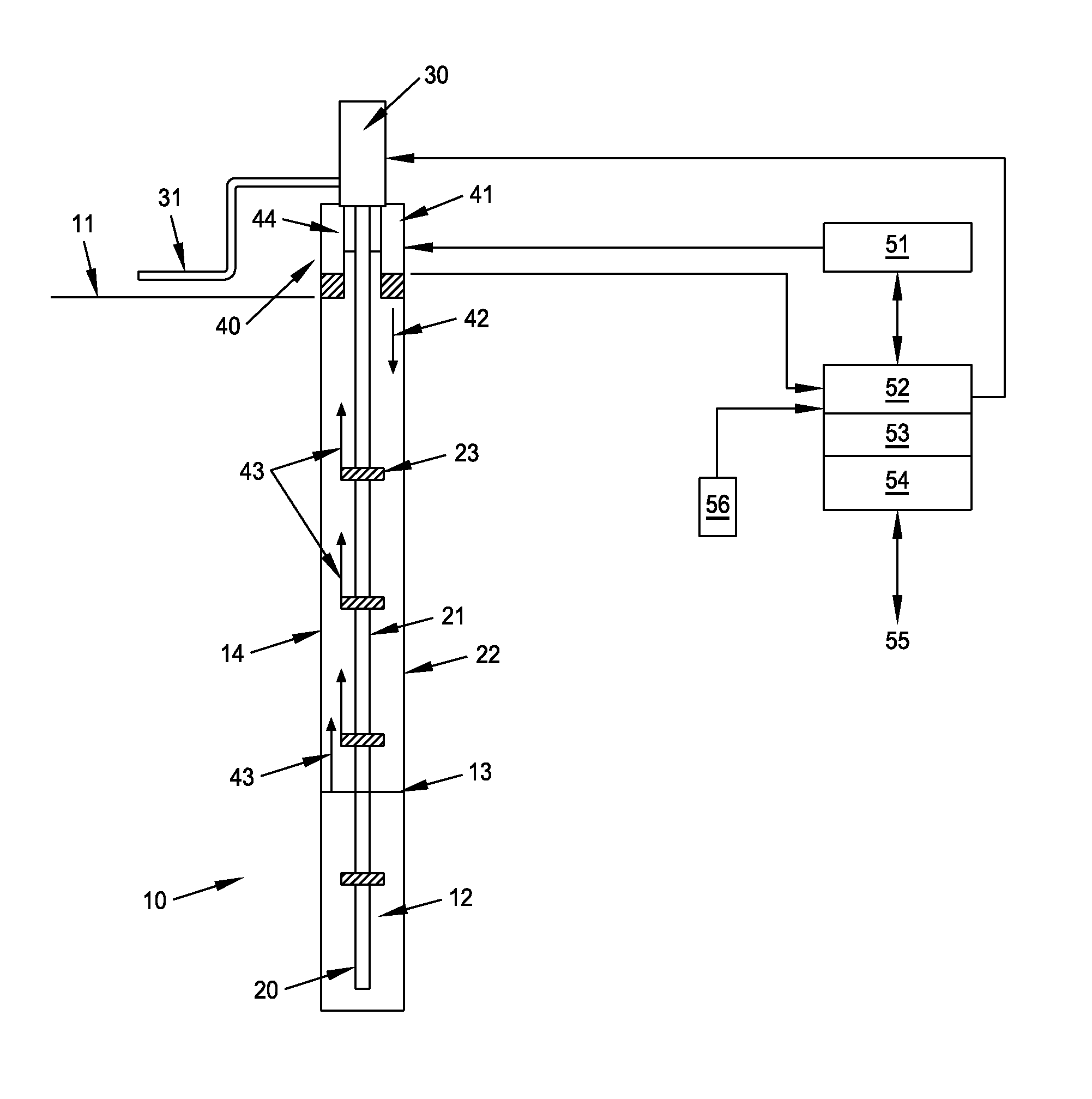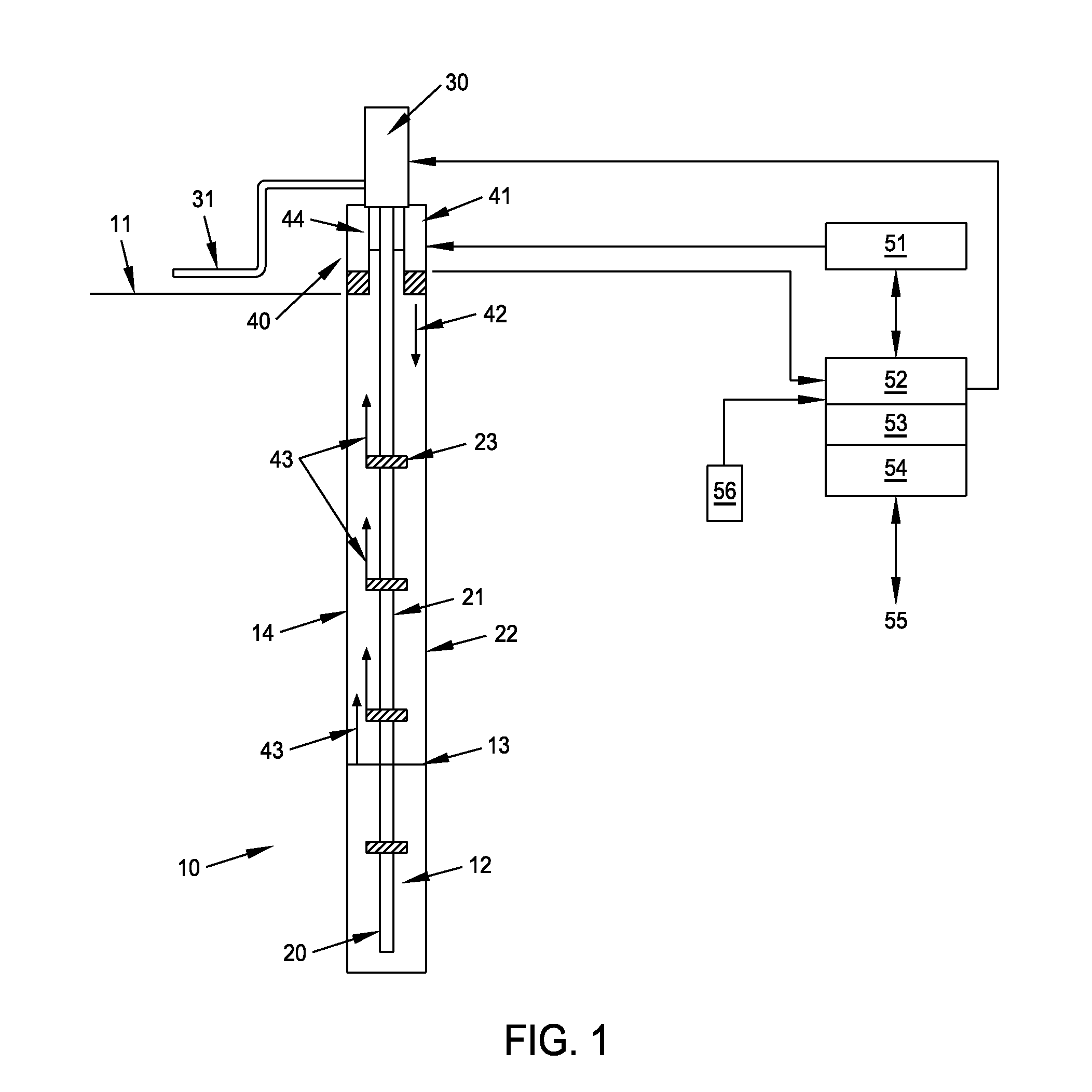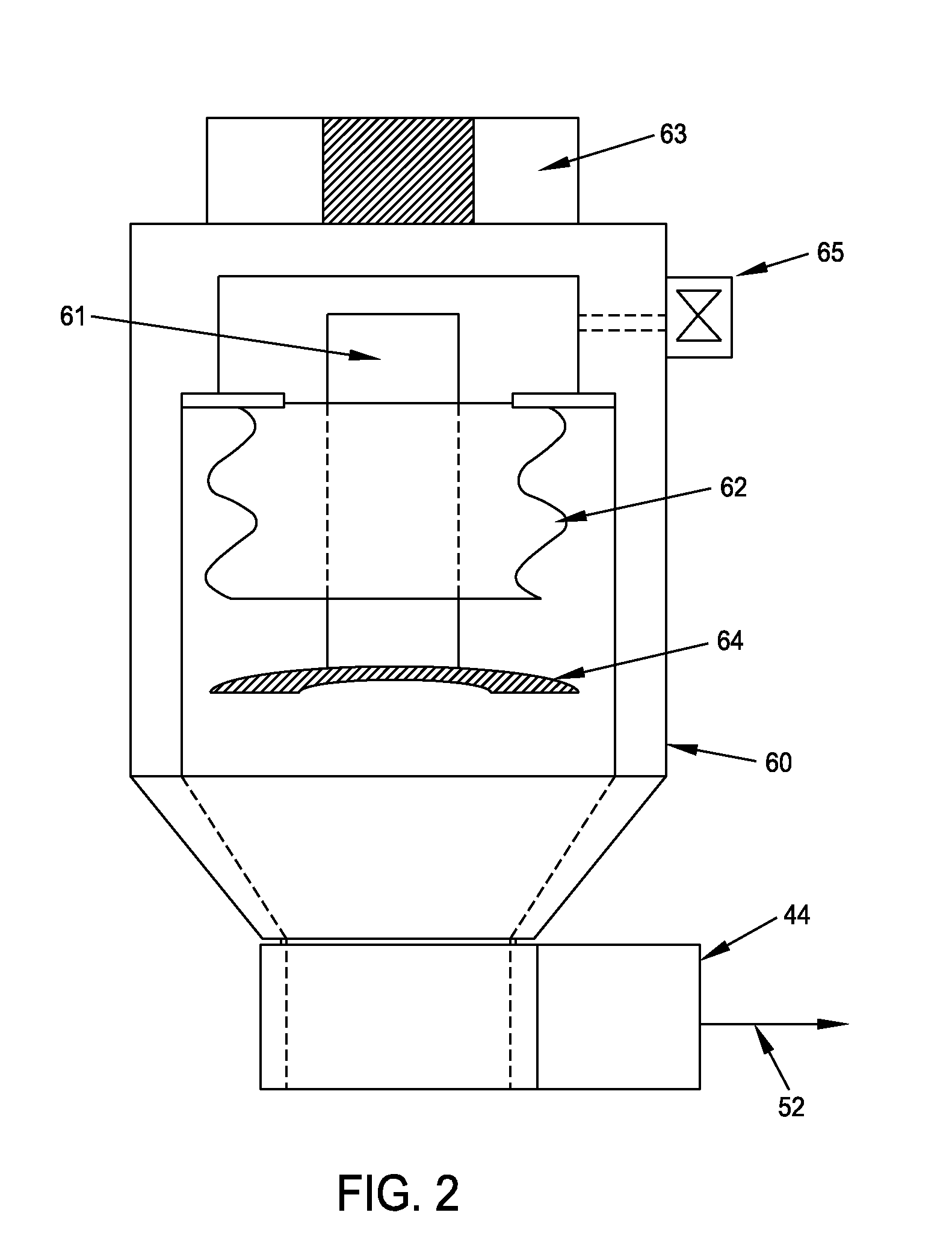Method and device for logging the fluid depth in a wellbore
a wellbore and fluid depth technology, applied in the field of wellbore fluid depth logging, can solve the problems of unfavorable oil pumping operation withdrawal, increase the extraction rate, and pose a possible danger, and achieve the effect of elegant possibility and robust vibrator
- Summary
- Abstract
- Description
- Claims
- Application Information
AI Technical Summary
Benefits of technology
Problems solved by technology
Method used
Image
Examples
Embodiment Construction
[0084]Illustrated in FIG. 1 is a wellbore 10. The wellbore 10 extends from the ground surface 11 downward to a deposit for crude petroleum or crude oil. The crude oil 12 forms, together with additional fluids, a mixture that is separated by a boundary layer 13 from the various gases and gaseous media 14 forming above it. These gases are, among others, nitrogen, argon, and other components of the atmosphere and, in addition, methane and other gases that form above the crude oil. The composition varies over the course of time and also with the depth of the wellbore 10.
[0085]The precise location of the boundary layer 13 between the fluid substances containing the crude oil 12 and the gaseous media 14 constitutes a fluid depth. The precise location of this fluid depth 13 or of the boundary layer varies over the course of time, depending on the rate at which the crude oil 12 and the other fluids enter the wellbore 10 from the side and from below.
[0086]In order to extract the crude oil 12...
PUM
 Login to View More
Login to View More Abstract
Description
Claims
Application Information
 Login to View More
Login to View More - R&D
- Intellectual Property
- Life Sciences
- Materials
- Tech Scout
- Unparalleled Data Quality
- Higher Quality Content
- 60% Fewer Hallucinations
Browse by: Latest US Patents, China's latest patents, Technical Efficacy Thesaurus, Application Domain, Technology Topic, Popular Technical Reports.
© 2025 PatSnap. All rights reserved.Legal|Privacy policy|Modern Slavery Act Transparency Statement|Sitemap|About US| Contact US: help@patsnap.com



